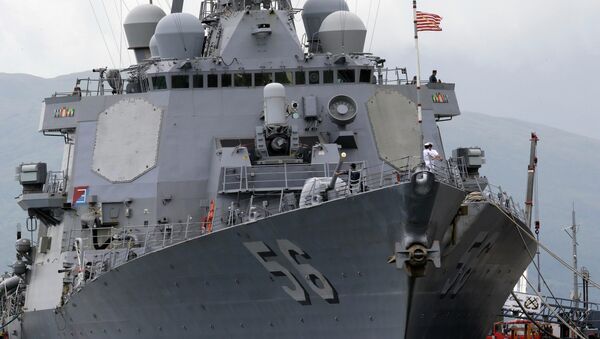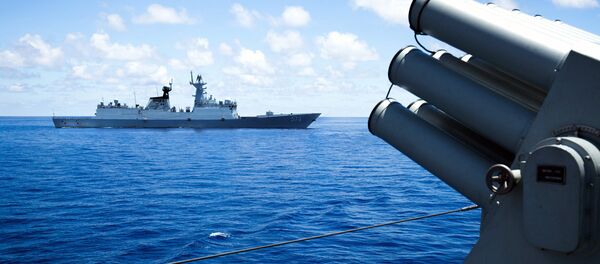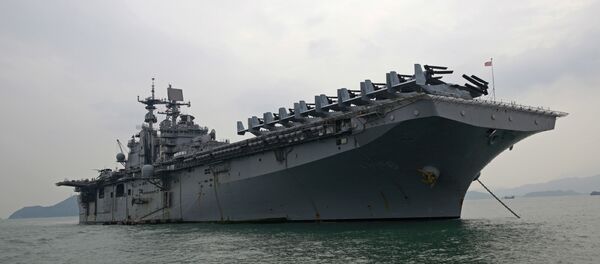On Sunday, the destroyer USS John S. McCain, named for both the father and grandfather of Arizona Senator John McCain, and the submarine USS Frank Cable made a historic visit to the Vietnamese port of Cam Ranh Bay.
"The ship’s visits to Cam Ranh Bay International Terminal and the naval port at Da Nang, as well as a series of at-sea exercises with the Vietnam People’s Navy, are further evidence of the growing strategic relationship between the United States and Vietnam," Senator McCain said in a statement.
"I am confident our two nations will continue to work together to strengthen open maritime commerce and maintain a balance of power that favors the rules-based order that underpins our shared security and prosperity."
Both vessels left port earlier on Tuesday.
While the port call may be significant in terms of US-Vietnamese relations, it also serves a more immediate purpose in light of tensions in the neighboring South China Sea.
Cam Ranh Bay is roughly 200 miles from the Paracel and Spratly island chains, where China has constructed a series of artificial islands.
The US and its Pacific allies have objected to these land reclamation projects, concerned that they are being used to establish an air defense zone. China maintains it has every right to build within its own territory and that the islands will be used primarily for civilian purposes.
While the US Navy has conducted provocative "freedom of navigation" operations within the 12-mile territorial limit of the islands, Beijing has also had clashes with Vietnamese fishing and coast guard vessels in the region.
A highly disputed region through which roughly $5 trillion in international trade passes annually, most of the South China Sea is claimed by China, though are a number of competing claims by other nations, including Vietnam.
The US Naval presence in Cam Ranh Bay comes amid American efforts to convince regional allies to play a more active role in preventing China’s rising influence. Earlier this month, Japan’s recently appointed Defense Minister Tomomi Inada indicated strong support for the Pentagon’s activities.
"Japan, for its part, will increase its engagement in the South China Sea, for example, Maritime Self-Defense Force joint training cruises with the US Navy and bilateral and multilateral exercises with regional navies," she said.
The US praised Inada’s remarks.
"The United States welcomes Japan’s interest in expanding its maritime activities in the South China Sea," reads a statement from the US Navy.
"We continue to explore ways to enhance US-Japan cooperative efforts to contribute to the security and stability of the region."





